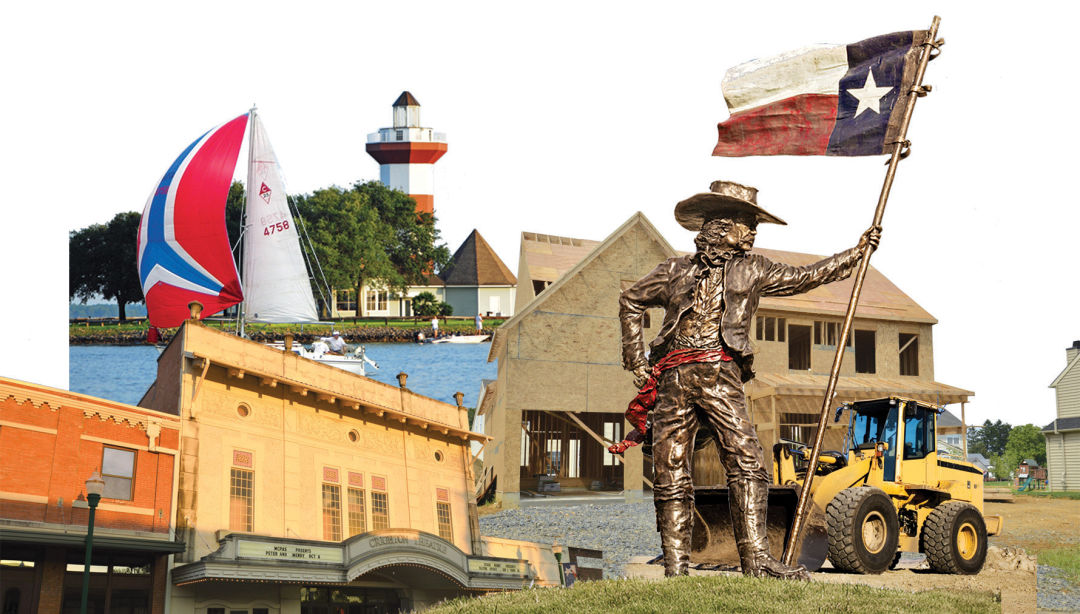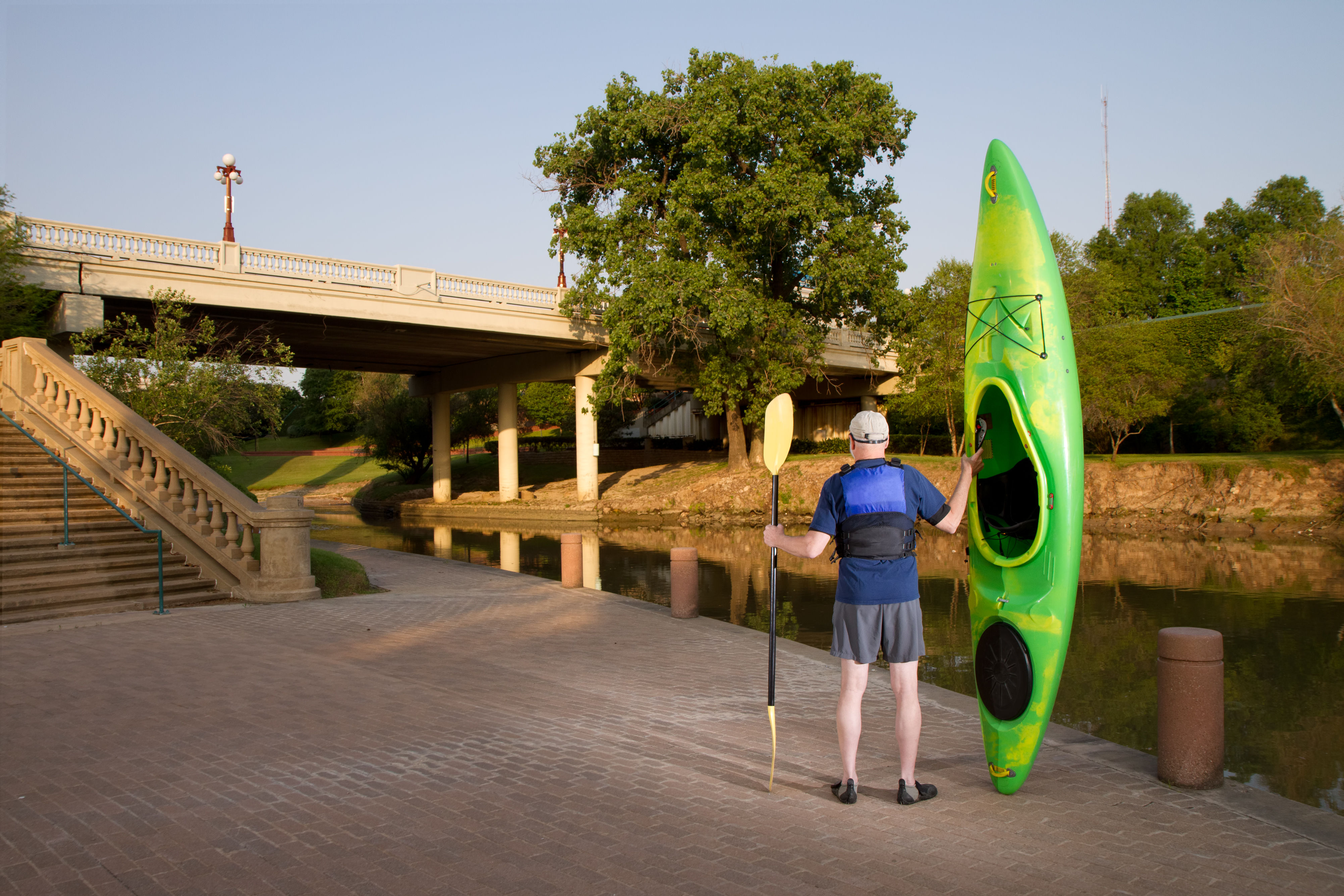Conroe Is the Fastest Growing City in America. Why?

When we hoisted ourselves into Danielle Scheiner’s massive Chevy Tahoe for what she calls the “windshield tour” of Conroe, we didn’t expect much—at best the usual assortment of tract homes and dressed-up strip malls.
But then she drove us through the historic downtown featuring a vaudeville theater and local coffee shops, past its expanded airport, and through more than 200 acres of freshly-minted office park, appointed with angular street lights from the future. At every turn, we saw workers in cherry pickers fiddling with new power lines and nascent overpasses with still-exposed rebar, hinting at traffic jams to-be. There was simply a lot to see, and, apparently, a whole lot more to come.
Back in May, the U.S. Census Bureau included Conroe—that oft-forgotten stop 40 miles up I-45—on its list of 15 fastest growing cities. McKinney and Frisco near Dallas and Cedar Park and Georgetown near Austin helped round out the list, but Conroe stood out not just as the only Houston-area pick, but also for its position at the very top—the fastest growing city in the country.
This was surprising. Aside from small brushes with success (a 1931 oil discovery that briefly made the city home to the most millionaires per capita in America) and fame (Elvis Presley performed on the high school’s football field in 1955), Conroe’s lasting relevance has been as seat for Montgomery County. When Scheiner relocated to Conroe from Austin in 1999, even she had never heard of the place, which, as recently as 2007, the Houston Chronicle dismissed as a “sleepy, semi-rural town.”
But talk to Scheiner, deputy director for the Greater Conroe Economic Development Council, and visit her conference room decorated with huge maps of the area, and you’ll soon come to see a certain inevitability to the city’s boom—it’s the next area north of Houston left undeveloped. Couple that with a steady influx of businesses moving operations to the area, and it starts to make sense that since 2000, Conroe’s population has more than doubled, to 82,286.
“It’s grown organically, as opposed to mechanically,” says Harold Hutcheson, manager for the Conroe Convention & Visitors Bureau, contrasting the city with master-planned communities such as Kingwood, Cinco Ranch and The Woodlands, where developers have spent millions to carve out something that feels like an authentic hometown. Conroe, Hutcheson points out, has been sitting here, with an actually authentic Old Texas downtown, low cost of living, and, since 1973, 20,000-acre lake bounded by the equally massive Sam Houston National Forest. The quality of life already existed; developers only needed to add houses.
Keller Williams agent James McDugle says he’s worked with clients decamping to Conroe from areas like The Woodlands in favor of cheaper, newer homes and even better access to nature. And lake life, he says, is compelling enough for some to hoof it from Conroe to the Galleria and back five times a week. “It’s a small town that’s going to explode,” McDugle says. “Get it while you can.”
Developers are about to break ground on The Woodlands Hills, a smaller Conroe cousin to its namesake, and one of the maps in Scheiner’s conference room details Grand Central Park, a nearby master-planned community emerging atop the former Camp Strake Boy Scouts facility. The city expects to hit 100,000 residents by 2020. But don’t expect growth to end there.
Next stop, Huntsville?




